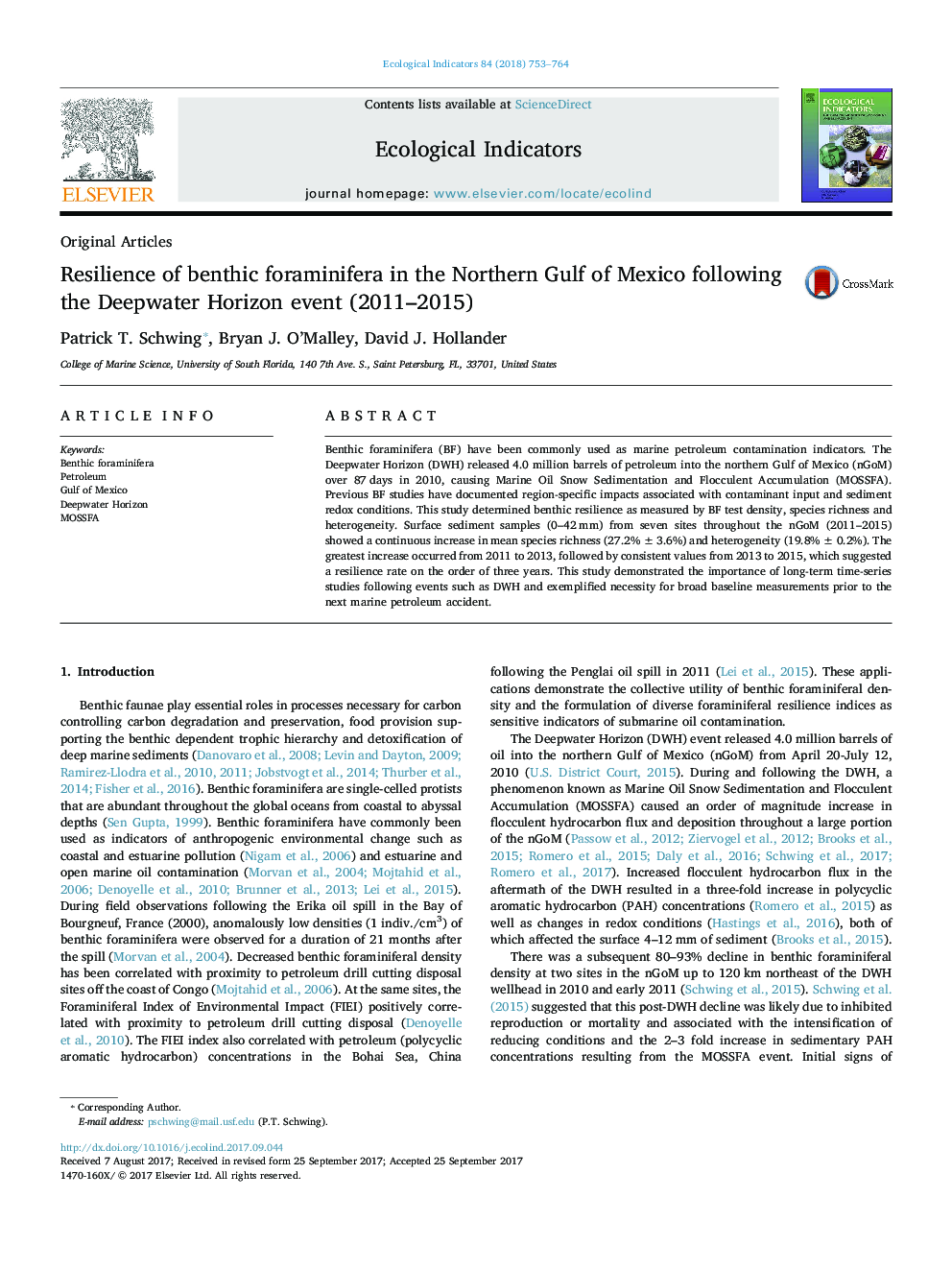| کد مقاله | کد نشریه | سال انتشار | مقاله انگلیسی | نسخه تمام متن |
|---|---|---|---|---|
| 5741596 | 1617118 | 2018 | 12 صفحه PDF | دانلود رایگان |
عنوان انگلیسی مقاله ISI
Resilience of benthic foraminifera in the Northern Gulf of Mexico following the Deepwater Horizon event (2011-2015)
ترجمه فارسی عنوان
انعطاف پذیری فرومینیفر بنت در خلیج شمالی مکزیک پس از رویداد افق دهانه (2011-2015)
دانلود مقاله + سفارش ترجمه
دانلود مقاله ISI انگلیسی
رایگان برای ایرانیان
کلمات کلیدی
موضوعات مرتبط
علوم زیستی و بیوفناوری
علوم کشاورزی و بیولوژیک
بوم شناسی، تکامل، رفتار و سامانه شناسی
چکیده انگلیسی
Benthic foraminifera (BF) have been commonly used as marine petroleum contamination indicators. The Deepwater Horizon (DWH) released 4.0 million barrels of petroleum into the northern Gulf of Mexico (nGoM) over 87 days in 2010, causing Marine Oil Snow Sedimentation and Flocculent Accumulation (MOSSFA). Previous BF studies have documented region-specific impacts associated with contaminant input and sediment redox conditions. This study determined benthic resilience as measured by BF test density, species richness and heterogeneity. Surface sediment samples (0-42 mm) from seven sites throughout the nGoM (2011-2015) showed a continuous increase in mean species richness (27.2% ±3.6%) and heterogeneity (19.8% ±0.2%). The greatest increase occurred from 2011 to 2013, followed by consistent values from 2013 to 2015, which suggested a resilience rate on the order of three years. This study demonstrated the importance of long-term time-series studies following events such as DWH and exemplified necessity for broad baseline measurements prior to the next marine petroleum accident.
ناشر
Database: Elsevier - ScienceDirect (ساینس دایرکت)
Journal: Ecological Indicators - Volume 84, January 2018, Pages 753-764
Journal: Ecological Indicators - Volume 84, January 2018, Pages 753-764
نویسندگان
Patrick T. Schwing, Bryan J. O'Malley, David J. Hollander,
